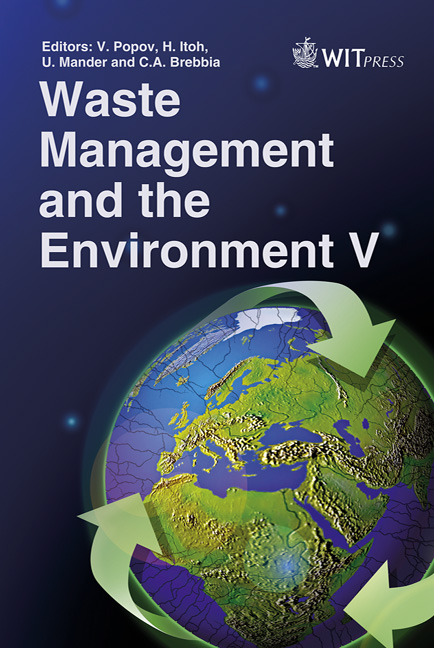Toxicity Identification Evaluation Of Landfill Leachate Taking A Multispecies Approach
Price
Free (open access)
Transaction
Volume
140
Pages
12
Page Range
311 - 322
Published
2010
Size
353 kb
Paper DOI
10.2495/WM100281
Copyright
WIT Press
Author(s)
B. A. Suliasih, M. S. Othman, L. Y. Heng & S. Salmijah
Abstract
In this study, the first phase of Toxicity Identification Evaluation (TIE) was used to characterise the major toxicants present in a Malaysian landfill leachate, using multispecies bioassay. Freshwater fish (Rasbora sumatrana), freshwater prawn (Macrobrachium lanchesteri) and tomato seeds (Lycopersicon esculentum) were chosen as test species based on local availability, as well as their broad sensitivity for environmental toxicants. Physico-chemical fractionation steps (oxidant reduction with sodium thiosulphate, EDTA chelation, pH adjustment, pH adjustment followed by filtration, aeration, extraction with solid phase C18 column (SPE), and graduated pH analyses) were carried out. The results show that the major toxicants were mostly basic in nature, precipitable under acidic conditions and contained non-polar organic compounds. The small reductions in toxicity observed when treated with sodium thiosulphate indicate the presence of oxidizers. The EDTA chelating step did not significantly reduce toxicity in the test organisms, suggesting insignificant levels of (toxic) metals. The formation of emulsion when mixed with crude oil indicates the presence of surfactant. Keywords: toxicity identification evaluation, landfill leachate, bioassay, surfactant. 1 Introduction Leachates are the liquid generated by the percolation of rainwater and moisture through the layers of wastes in landfills or dumping areas (Koshy [1]). Landfill leachates may contain substantial amounts of dissolved organics, xenobiotic
Keywords
toxicity identification evaluation, landfill leachate, bioassay, surfactant





